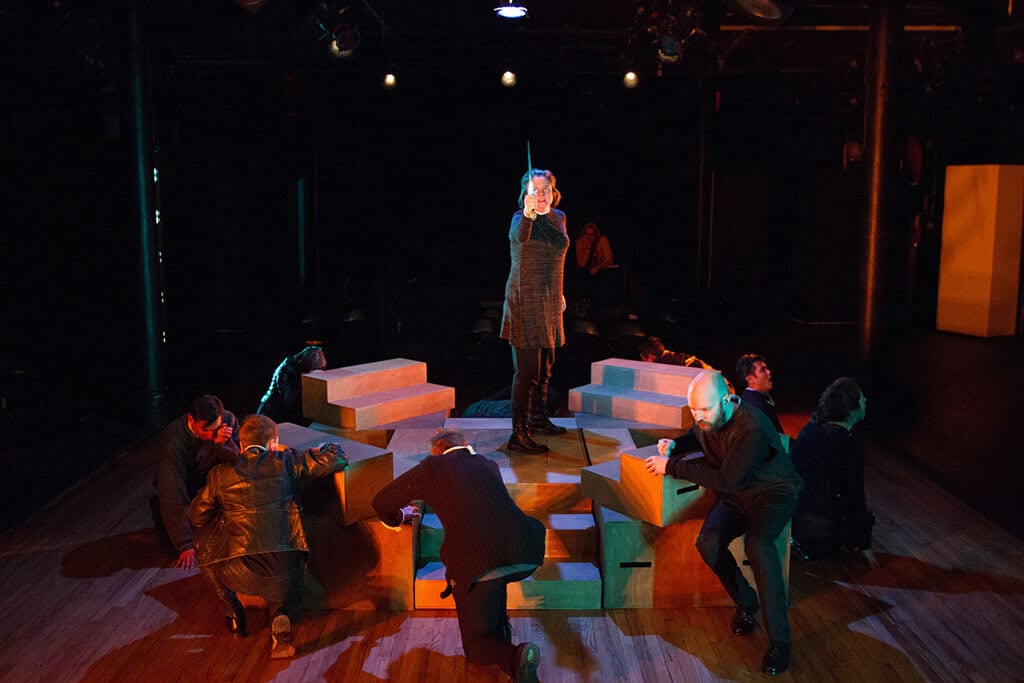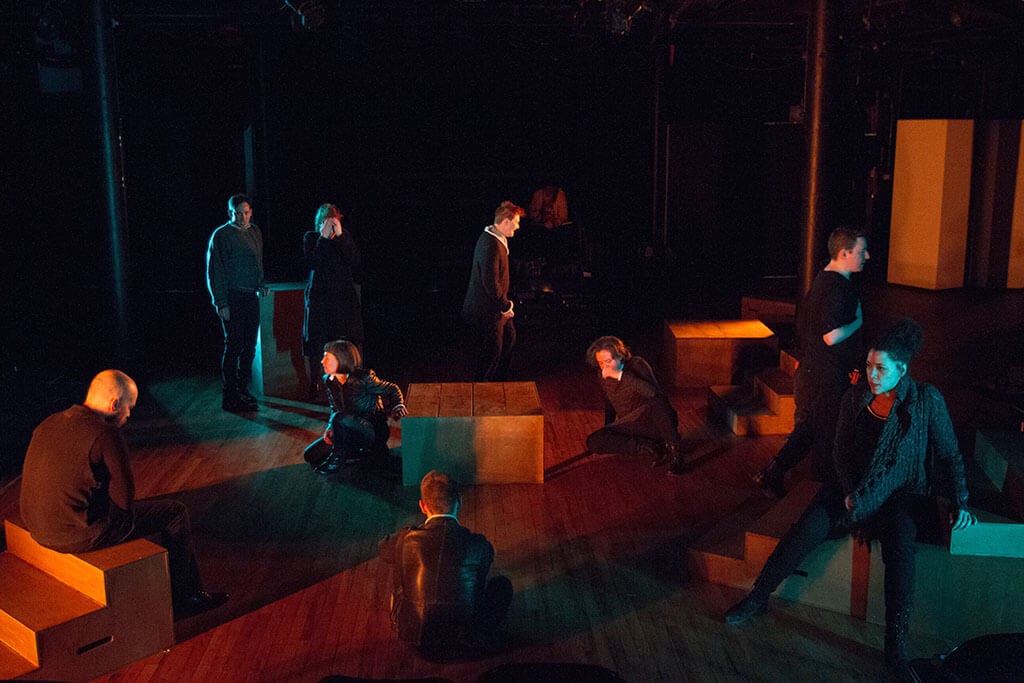This gives “To be or not to be?” an entirely new meaning. I have to admit I was skeptical when I first walked into the theater for a show called Hamlet10. Produced by the New York Shakespeare Exchange, the advance publicity for the show explained that the entire ensemble of ten actors would be playing Hamlet. As a particular fan of the Danish prince, I couldn’t imagine a way that five men and five women could successfully pull together such a complex character with such a fragmented performance – especially in such a character-centric play. However, the press release promised to “delve into the question of who is Hamlet,” and I was excited to see how it would be done.
As it turned out, I was happily surprised from the beginning, and my enjoyment of the play only grew. Dividing Hamlet between the ten actors didn’t diminish the character. Instead, the varied portrayals only added to how I viewed Hamlet.
Each scene had anywhere from one actor to two, three, five, or even the entire company playing Hamlet at the same time. The multiple Hamlets brought new life to scenes where the prince is struggling with his decisions, such as the confrontation of his mother Gertrude or his murder of the old advisor, Polonius. The different Hamlets spoke to each other, argued with each other, and each embodied his powerful, clashing traits: madness, intelligence, fear, sorrow, and more.
The actors didn’t just play the Danish prince as their own individual role, but as a group: they worked together to build on his character, each one contributing something different. The result was magnificent, especially during the famous soliloquies. It was fascinating to watch a bunch of different Hamlets argue the age-old questions among themselves, like a group debate. Suddenly Hamlet’s soliloquies became more intense, more physical, and thrillingly schizophrenic. A performance that manages to find something truly new in a play as time-honored as Hamlet is few and far between, and director Ross Williams delivers a thought-provoking production.
The actors themselves add infinite personality to this production. Put on in a small, low-ceilinged theater with little emphasis on props or costume, every twitch of an eye or flick of a wrist could be picked up by the audience. Whether they were performing as Hamlet or as supporting characters – which, unlike Hamlet, were played by just one actor each – they showed a powerful dedication to their roles.
That being said, I wouldn’t recommend this show for anyone who isn’t already familiar with Hamlet. The actors switch in and out of their roles so abruptly and so often that, unless you have a good grasp of Hamlet’s lines, it would be easy to fall behind. However, if you are comfortable with the play, this production is a stimulating celebration of the Danish prince.





